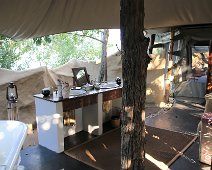
As we were the only two visitors at Chongwe River Camp, we were given the "Honeymoon Suite" called the "Cassia". This was our outdoor bathroom.
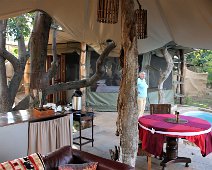
This was where our meals and drinks were served by our personal butler.... that's right we had a personal butler who took care of all our needs.
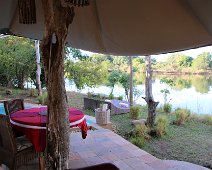
One of the views of the Chongwe River from our suite. The hippos provided us lots of entertainment by grunting and laughing in the river.
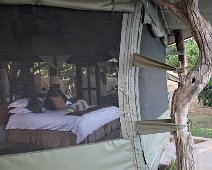
The main tent was screen enclosed to keep any insects or other creatures out and had canvas flaps that were lowered by the staff each evening to keep the room warmer. Remember we went in July which is winter there.
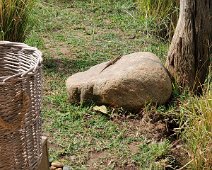
These two Striped Skinks had taken up residence under the large rock pictured here. They would come out to bask in the sunshine.
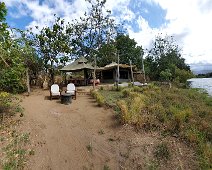
Each morning when we arose the chef and Tharo (our personal butler) would have built a fire in the sand just in front of the two white chairs. They took our breakfast order and proceeded to create whatever we wished for over the fire. It was then served at our personal dining table under the tent.
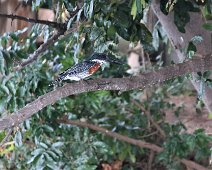
Our first safari at Chongwe was a boat excursion up the Chongwe River. There we saw this Giant Kingfisher. The giant kingfisher is the largest species of magnificent kingfishers in Africa.
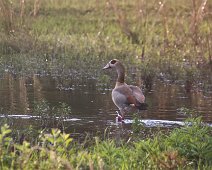
Egyptian Geese (or Nile Geese) are named because their eye looks like the Egyptian Eye of Horus. Egyptian geese were domesticated in the time of the ancient Egyptians, who viewed them as sacred, depicting them often in their artwork.
The erosion of the cliff has left these trees dangling precariously at its edge with their roots exposed.
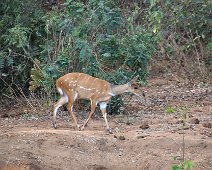
Bushbuck - Female = BushBuck are extremely good swimmers, easily crossing rivers as wide as 3.86 miles.
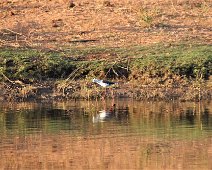
Black Winged Stilt - Fun fact: This bird sometimes performs a high-leaping display with a "floating" descent, but the significance of this performance isn't clear.
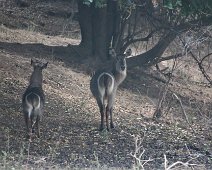
Two Waterbuck - They are well-known for their trademark white target patterns around the hindquarters.
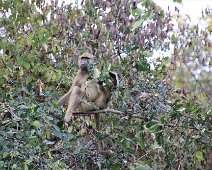
The baboon’s main predator is the leopard. However, many unlucky leopards have been badly injured after being aggressively mobbed and attacked by groups of adult male baboons. This baboon is sitting comfortably on watch in a Tamarind tree.
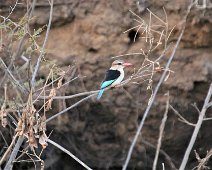
Woodland Kingfisher - Contrary to their names, the majority of kingfishers don’t actually fish for their food, with the Woodlands Kingfisher forming part of the non-fishing group. Fish are seldom part of the Woodland’s diet. It prefers to hunt its prey from low tree branches away from water, swooping down to catch insects on the ground.
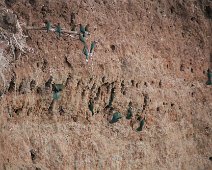
As dusk settles in the White-Fronted Bee-Eaters return to their nests built into the side of a cliff.
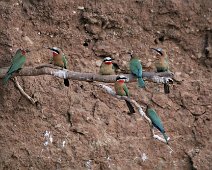
These birds fearlessly pick bees and flying insects out of nowhere with their curved beak, hitting and rubbing the insects repeatedly on a hard surface. This removes all the poisons before eating them.
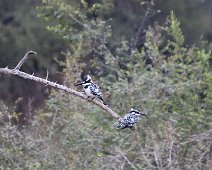
Two Pied Kingfisher - Pied kingfishers never hunt on land. Their diet consists predominantly of fish, with a few crustaceans on the side.
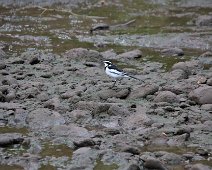
African Pied Wagtail - Pied wagtails wag their tails almost constantly, but no one is certain why this is. However, it is thought to be a behaviour developed for social signalling.
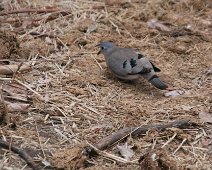
Green-Spotted or Emerald-Spotted Dove - Emerald Spotted Doves perch in trees and all foraging is done on the ground for small seeds, herbs and grasses and some invertebrates (termites).

Kittlitz's Plover - The Kittlitz’s Plover forages for food on open dry mud and short grass, usually close to water. It hunts usually by sight for invertebrates including insects, earthworms, crustaceans and mollusks.
Baobab Tree - The baobab’s biggest enemies are drought, waterlogging, lightning, elephants and black fungus.

Little Bee-Eater - Tend to be on low perches to prey or hunt on flying insects as these bee-eaters do not eat insects on the ground.
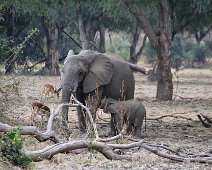
A nursing baby elephant. Calves depend almost entirely on milk for the first six months. The average daily intake of milk for calves is around two gallons a day. Calves may nurse from other female elephants in the herd as well.
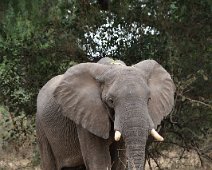
Elephants mate during the rainy season and have the longest pregnancy of any animal at 22 months. They give birth to a single calf that can weigh up to 250 pounds.

Waterbuck - Male - Waterbucks have an off-putting odor that comes from their sweat glands, that deters prey and affects the flavor of their meat.
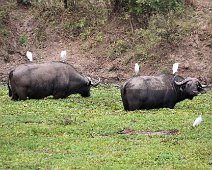
African Buffalo and Egret - The Egret sit on the buffalo and wait for it to stir up insects as they graze in the river.
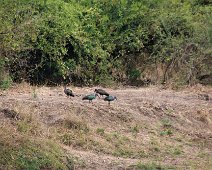
Hadada Ibis - They are Africa's most common and least aquatic ibis. Hadada live in open grasslands, savannahs and rain forests, especially along wooded streams, marshes and river courses.
Leopards are fast felines and can run at up to 36 mph! They’re super springy, too, and can leap 10 feet forward through the air – that’s the length of three adults lying head to toe!
Most leopards are light colored and have dark spots on their fur. These spots are called “rosettes” because their shape is similar to that of a rose. They blend in with their surroundings very well.

These big cats have a varied diet and enjoy different kinds of grub. They eat bugs, fish, antelope, monkeys, rodents, deer…in fact, pretty much any prey that is available!
Crowned Hornbill - The crowned hornbill have a codependent relationship with dwarf mongooses. They search for food together while warning each other of nearby predators.
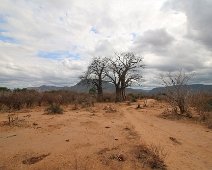
Natives utilize baobabs for many purposes, including shelter, ceremonies, food, medicine, fiber, juices and beer.
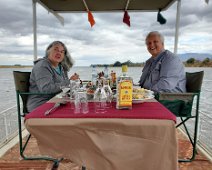
Upon our return to camp, we were surprised with a special lunch aboard a pontoon boat that took us down the Zambezi River.
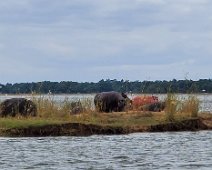
On an island in the Zambezi River some hippos were grazing. Among them was a pink one. Contrary to popular belief, the hippo is not an albino but is actually leucistic, a condition where the pigmentation of cells in an animal fail to develop properly.

Nocturnal animals, leopards are active at night when they venture out in search for food. They mostly spend their days resting, camouflaged in the trees or hiding in caves.

Leopards communicate with each other through distinctive calls. For instance, when a male wants to make another leopard aware of his presence, he’ll make a hoarse, raspy cough. They also growl when angry and, like domestic cats, purr when happy and relaxed. Cute, eh?
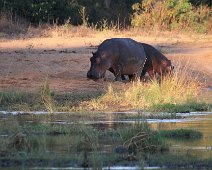
These hippos had just emerged from the river and were getting ready to go out on their nightly foraging trek.
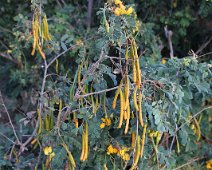
This is the Cassia tree (the one or camp suite is named for). The locals call this the "scrambled egg bush" because of it's distinctive flowers and color.

Our Tracker used a spotlight to find and point out other nocturnal animals on our drive back to camp. Like this Scrub Hare.
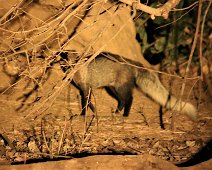
Honey Badger - They're Mean. It’s true that the honey badger has the Guinness Book of World Records title of "World's Most Fearless Creature," but they’re more than just audacious: they’re downright mean. They’re invasive and eager to pick a fight—even with a porcupine.
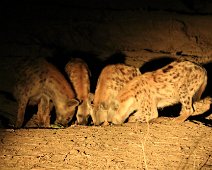
About 100 yards before we reached camp, we came upon this group of hyenas. They were completely engrossed in some type of meal.
The next morning was a walking safari. Because we were on foot our guide, George, and our tracker, Pilaf, brought extra protection, a .458 caliber rifle.

Walking through the twisted trees and underbrush allowed you to better experience the bush as the wildlife does.
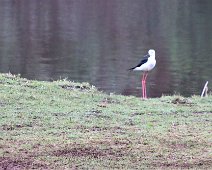
Black Winged Stilt has the second-longest legs in proportion to their bodies of any bird, exceeded only by flamingos.
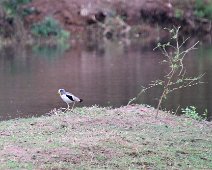
Wattled Lapwing Plover diet primarily revolves on insects. They forage slowly on the ground, searching for prey.
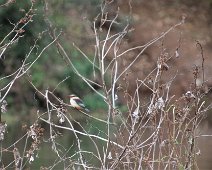
Striped Kingfisher is a highly territorial bird which will chase off not only others of the same species, but also shrikes, doves and rollers.
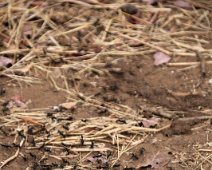
Army Ants - When ordinary ants need food, they sent out their scouts to search for food sources. Once the scouts find food, they recruit others from the colony to bring the food to their nest. However, Army ants search for their food as a team. Once they find it, they attack simultaneously.
Our guide, George, was able to show us this tube from a termite mound because it had already naturally been broken off. We could see how completely smooth the interior of tube was.
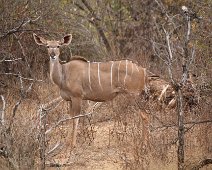
Kudu - Female - Kudus produce one of the loudest sounds made by antelope in the form of a gruff bark.
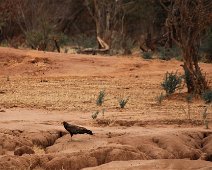
The Yellow-billed Kite is one of the most common raptors spread throughout the continent and even visible in urban locations.
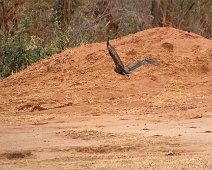
When in flight, the Yellow-billed Kite is fascinating to watch as it uses its tail as a very active rudder to guide its flight.
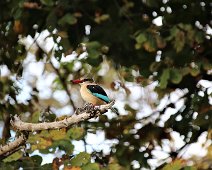
Woodland Kingfisher - The Woodland Kingfisher is a species of tree kingfisher that can be found in tropical Africa south of the Sahara. It is an aggressively territorial bird, attacking intruders including humans that dare to enter its territory. It can often be seen perching on a dead branch looking for food.
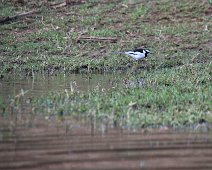
Blacksmith Plover - When Blacksmith Plovers feel threatened, they don't hesitate to attack an intruder and produce their harsh loud call; during this, their wings are spread, the neck is extended and the bill points towards the intruder. Such a display is very helpful for these small birds and often deter predators.
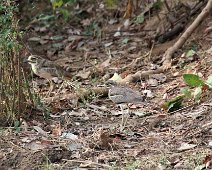
Water Thick-Nee - The water thick-knee is a terrestrial feeder that forages at night. Although it is typically associated with water it can be found foraging up 0.62 miles from water.
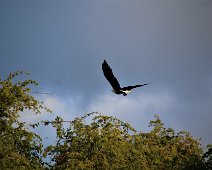
African Fish Eagle - African fish eagles are kleptoparasites, which is to say they habitually steal prey from other species. Common victims of this piratical behavior include goliath herons and saddle-billed stork.
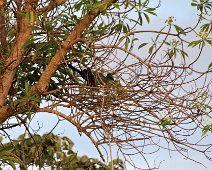
Purple-Crested Turaco - In the wild, Turacos live for 10-15 years, when caged, they live for as much as 30years.
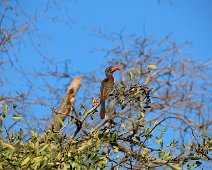
Crowned Hornbill - Crowned Hornbill nests in crevices in trees, walling in its young who then have to break out when they are ready to fledge.
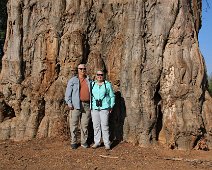
Ken and Sharon in front of "The Cathedral". The massive trunks (the largest circumference on record is 47 metres) have been, or are used, as jails, post offices and bush pubs, amongst other creative uses.
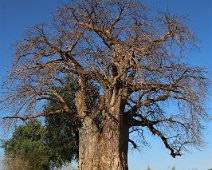
This tree is massive. This picture shows the entire tree with Ken and Sharon at the base with outstretched arms and they are still no where near the edges of the trunk.
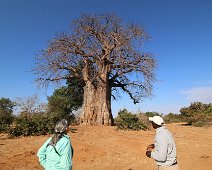
Sharon and our guide, George, admire "The Cathedral". Baobabs store large volumes of water in their trunks – which is why elephants, eland and other animals chew the bark during the dry seasons.
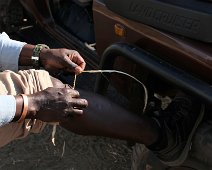
Here George shows us how the local people would take the soft, fibrous bark and flesh and weave rope.
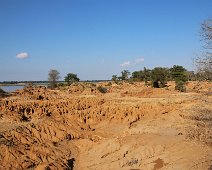
This is the site of an old village. Because the villagers would sweep the ground around the village it allowed rains and flooding to create channels that washed away the ground. If that started This is the site of an old village. Because the villagers would sweep the ground around the village it allowed rains and flooding to create channels that washed away the ground. If that started occuring, the village would just be moved to somewhere else along the riverbank. Our guide, George, retrieved a couple of pieces of old pottery from the ground to show us before returning it to its original location., the village would just be moved to somewhere else along the riverbank. Our guide, George, retrieved a couple of pieces of old pottery from the ground to show us before returning it to its orignal location.

Cardiospermum halicacabum aka Honeymoon Creeper is a vine that produces these tiny seeds with heart shapes on them. The local tribes would use these seeds to make necklaces and bracelets for their loved ones.
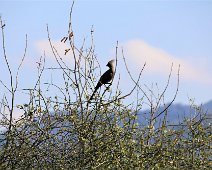
Gray Lourie is called a "Go Away" bird. The go-away bird gets its name from its well-known call, a harsh "kay-waaay," which warns other birds of a human's presence.

Chacma Baboon - Baboons are very vocal and use a range of different sounds to communicate with one another. They use a series of grunts, screams and alarm barks to alert troop members to danger, usually the presence of a predator.
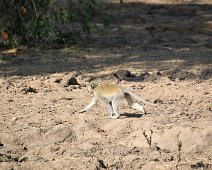
Vervet Monkey - These monkeys have pouches in their mouths where they can store food to be eaten later.
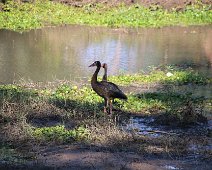
Spur Winged Goose - They are different to other geese because they have spurs (little spikey bits) on their wings which can sometimes be poisonous. They pick up the toxin from the Blister Beetle which is only found in certain parts of the goose’s habitat range.
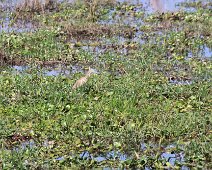
Squacco Heron stand motionless and quiet in vegetation, waiting for their victims. They may hunch while feeding and may use insects as baits.
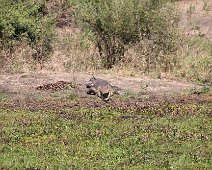
This Crocodile did not have any teeth. George, our guide, said he would have to stay near the water and eat catfish to survive as he could no longer chew other prey.
Today's safari was to be an all day outing. George, our guide, found us a lovely place to stop for lunch. Not sandwiches..... plates, silverware, wine, and a full meal.
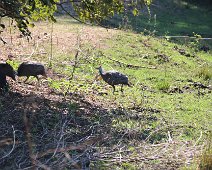
Helmeted Guinea Fowl - The ancient Romans domesticated guinea fowl for food. These birds are still kept domestically and also hunted today.
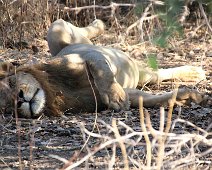
After lunch we came upon two very full lions. This one was actually having a hard time breathing because he was so stuffed. Sharon calls this picture, "I can't believe I ate the whole thing!"
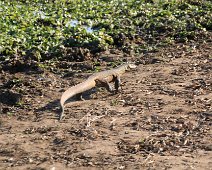
The Nile Monitor Lizard pillages a nest of the crocodile to steal its eggs. They cooperate and work together to confuse the crocodile trying to hatch its eggs. One will disturb the female crocodile while as another one is stealing the eggs.
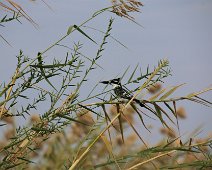
Pied Kingfisher hunt by hovering 50-65 feet above the water and then diving headfirst (or rather, bill-first) into the water. Pied kingfishers demonstrate spectacular speed and agility on the hunt.
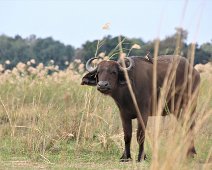
The African buffalo is considered one of Africa’s most dangerous animals, and is responsible for over 200 fatal attacks on humans every year. Due to its fierce, unpredictable nature, the African buffalo has never been domesticated.
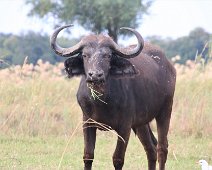
Predators such as lions have found to their cost that if you mess with one African buffalo, you mess with the whole herd!
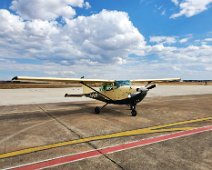
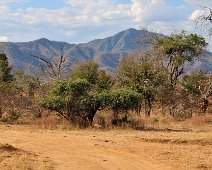
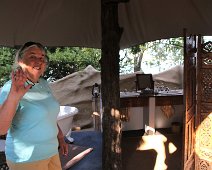
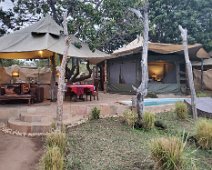
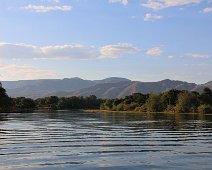

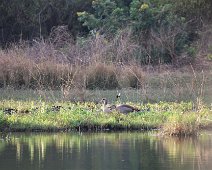
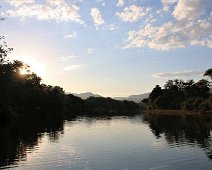
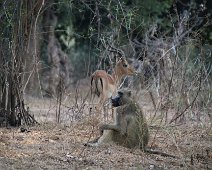
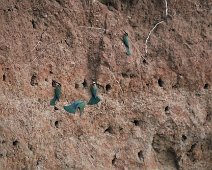
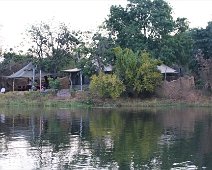
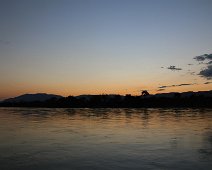
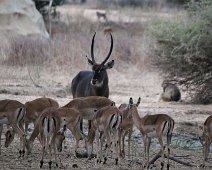
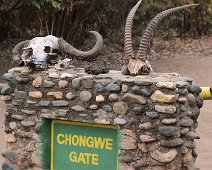
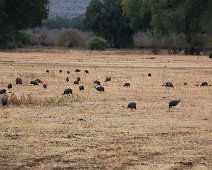
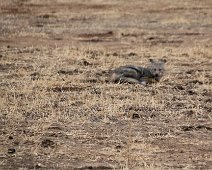
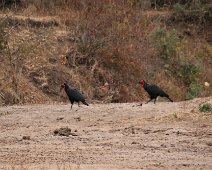
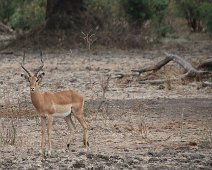
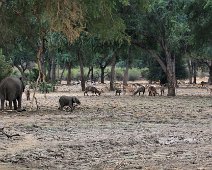
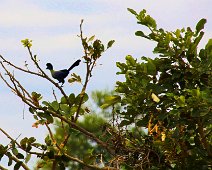
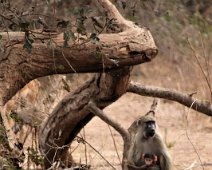
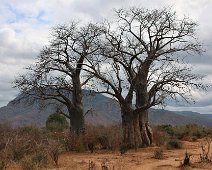
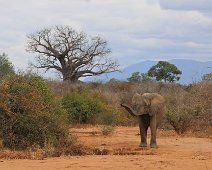

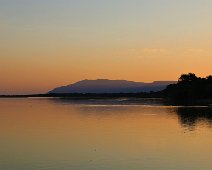
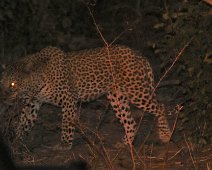
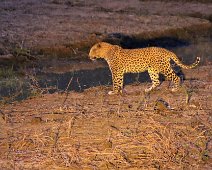
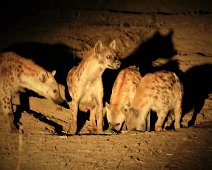
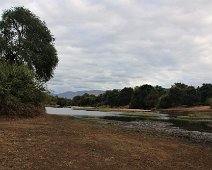
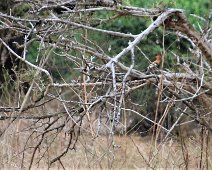
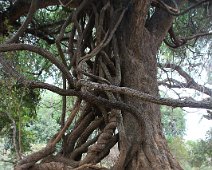
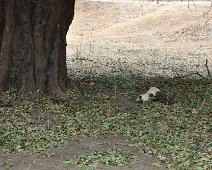
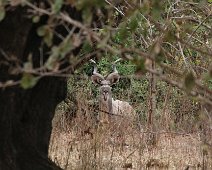
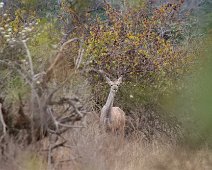
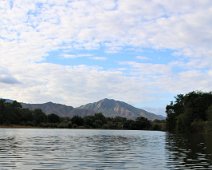
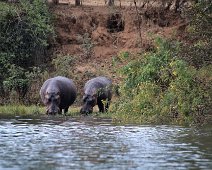
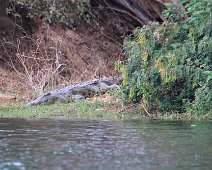
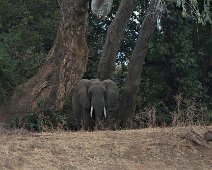
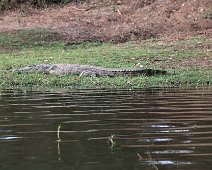
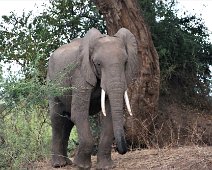
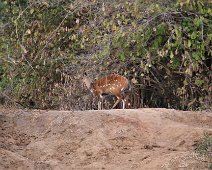
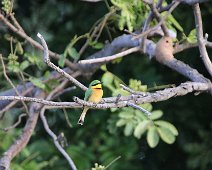
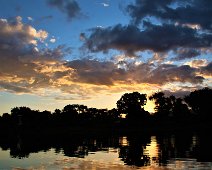
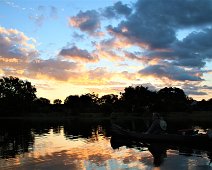
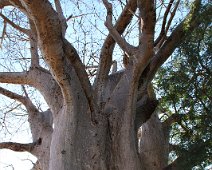
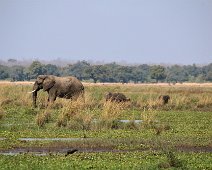
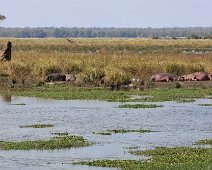
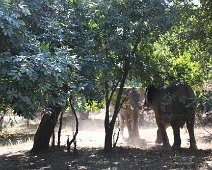
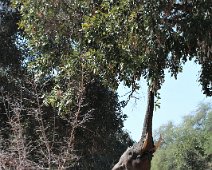
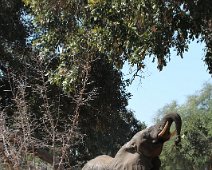
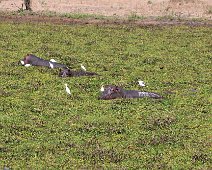
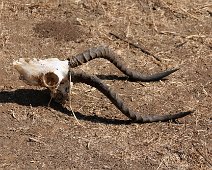
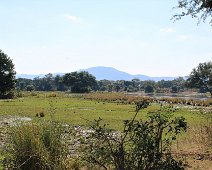
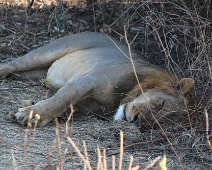
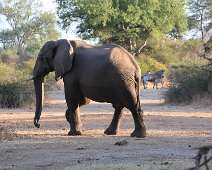
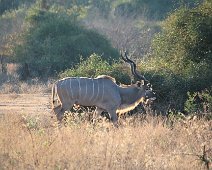
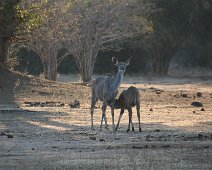
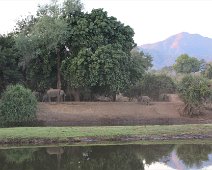
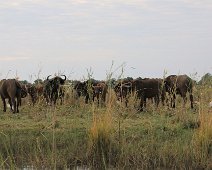
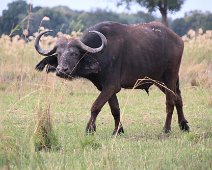
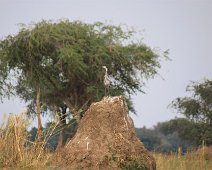
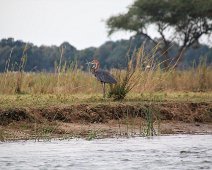
Zambia 2 - Chongwe